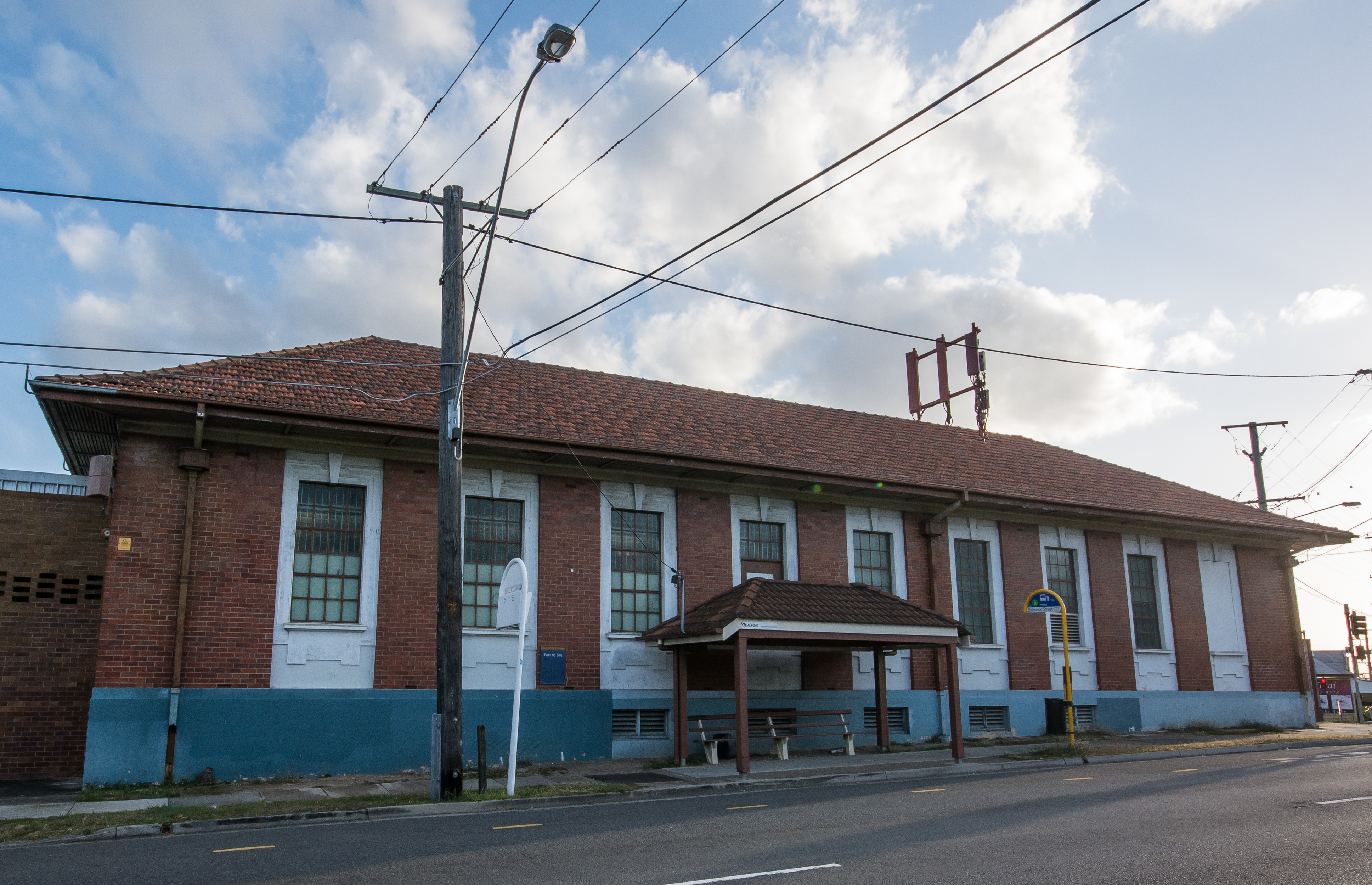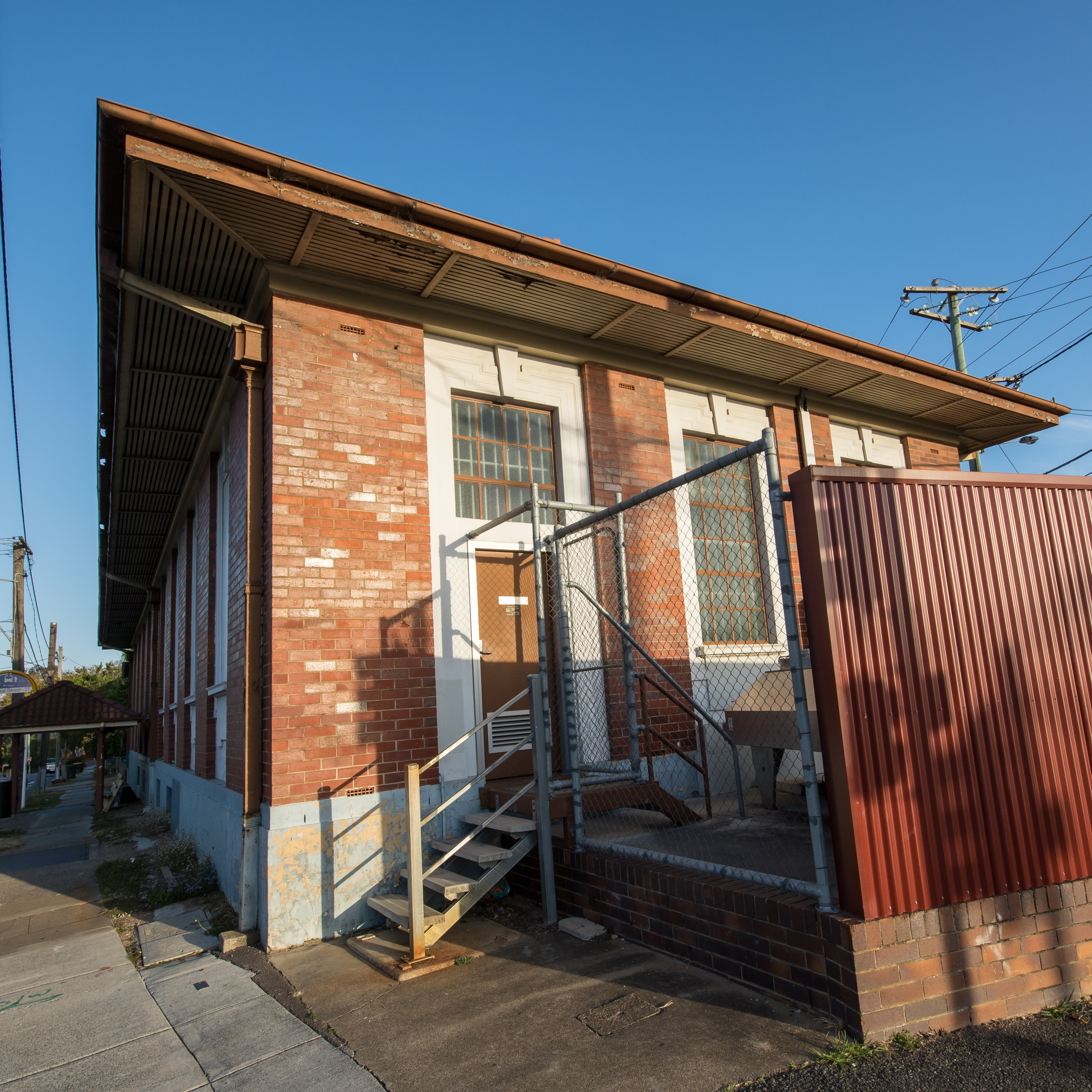Addresses
Type of place
Telephone exchange
Period
Interwar 1919-1939
Style
Free Classical
Addresses
Type of place
Telephone exchange
Period
Interwar 1919-1939
Style
Free Classical
The Telephone Exchange on Wynnum Road, known as the Bulimba Exchange, was one of the first six fully automatic telephone systems in Brisbane. Although it was proposed in 1913 as a vital piece of infrastructure in the growing but underserviced South Brisbane region, plans for the exchange were not drawn up until 1926. Built in 1927-28, the brick Telephone Exchange was constructed to meet the growing needs of the community as the locality underwent substantial commercial and residential growth during the interwar period.
Lot plan
L1_RP43206; L2_RP43206; L4_RP12509; L3_RP12509
Key dates
Local Heritage Place Since —
Date of Citation —
Construction
Roof: Tile;Walls: Face brick
People/associations
HW Barker (Architect)Criterion for listing
(A) Historical; (D) Representative; (E) AestheticInteractive mapping
Lot plan
L1_RP43206; L2_RP43206; L4_RP12509; L3_RP12509
Key dates
Local Heritage Place Since —
Date of Citation —
Construction
Roof: Tile;Walls: Face brick
People/associations
HW Barker (Architect)Criterion for listing
(A) Historical; (D) Representative; (E) AestheticInteractive mapping
History
Five telephone exchanges existed in Brisbane in 1912, but this was considered too large an area to cover. In 1913 Bulimba was proposed as a satellite exchange for South Brisbane. A 1913 circular memorandum (written by acting Electrical Engineer JM Crawford) mentioned extensions to the tramway as a potential reason for ‘closer settlement and consequently more rapid telephonic development of the area’. Bulimba had forty-four subscribers, not a large number but the area was ‘untapped’, according to the memo. The acting assistant engineer W Corbett prioritised Bulimba second in order of urgency, after South Brisbane.
‘Bulimba’ was proposed and kept as the name, despite the exchange’s location in Norman Park.
(Population of Balmoral in 1913 was 3,900; estimated for 1928 was 5,500)
Corbett’s 1913 report presumed the installation of an automatic exchange as ‘[t]he boundaries proposed are too limited for economical working of Manual Exchange.’ The Bulimba area, Corbett predicted, would grow either along the railway line or the proposed aerial cable on Hawthorne Road. A theoretical centre for the exchange was selected, but Corbett preferred a site at ‘the intersection of Hawthorne Road and New Cleveland Road [now Wynnum Road] where five roads meet… it is a convenient meeting point for the two main avenues of construction which serve the Bulimba area, and it is recommended.’
The onset of World War I halted any progress on the exchanges, and no further steps were taken until the 1920s, when Brisbane’s rapidly growing population made the upgrades essential.
Plans were drawn up in 1926. Tenders were called in 1927 and J and M Maskrey’s quote of £4,469 was accepted. The exchange was opened on 26 May 1928 at 2pm, at the same time as the Yeronga and Nundah exchanges. Bulimba exchange numbers used the prefix ‘JY’.
Statement of significance
Relevant assessment criteria
This is a place of local heritage significance and meets one or more of the local heritage criteria under the Heritage planning scheme policy of the Brisbane City Plan 2014. It is significant because:
References
-
National Archives of Australia, Circular memorandum 490 – Telephone Development Survey – Brisbane (1913) (series number J3088, barcode 6674177)
Citation prepared by — Brisbane City Council (page revised June 2022)


